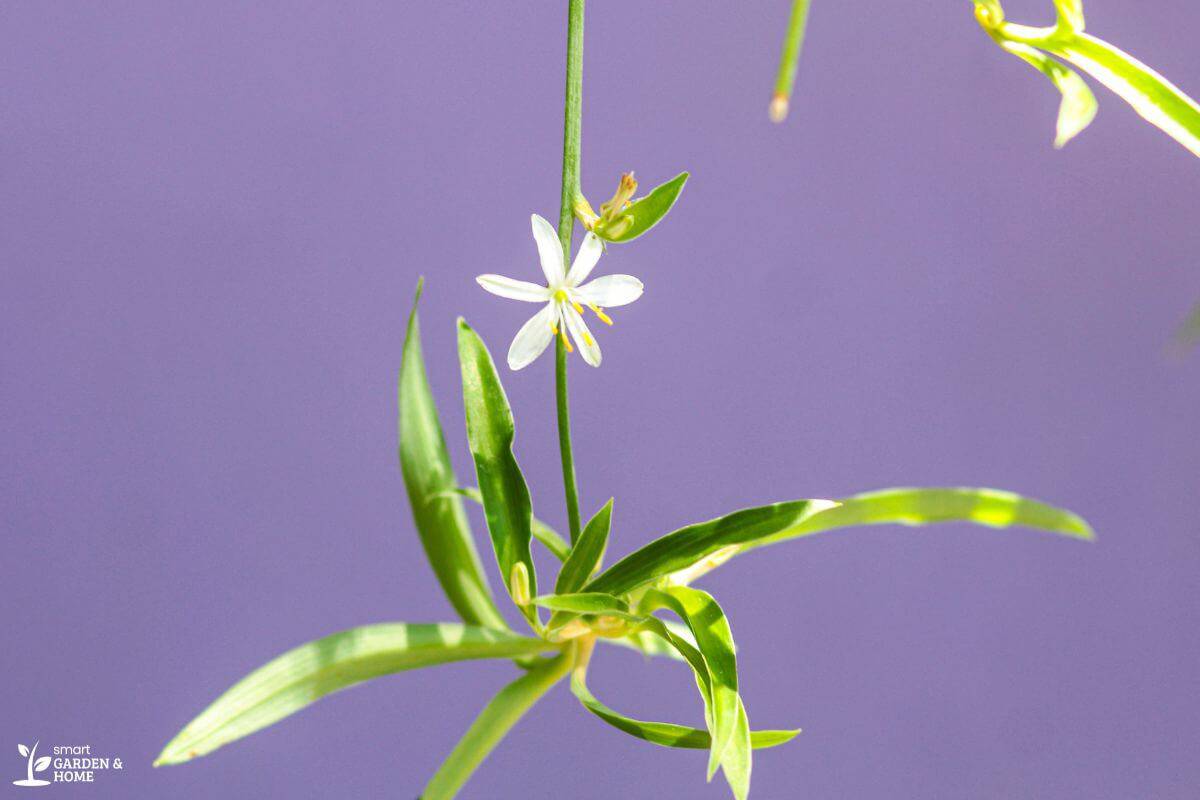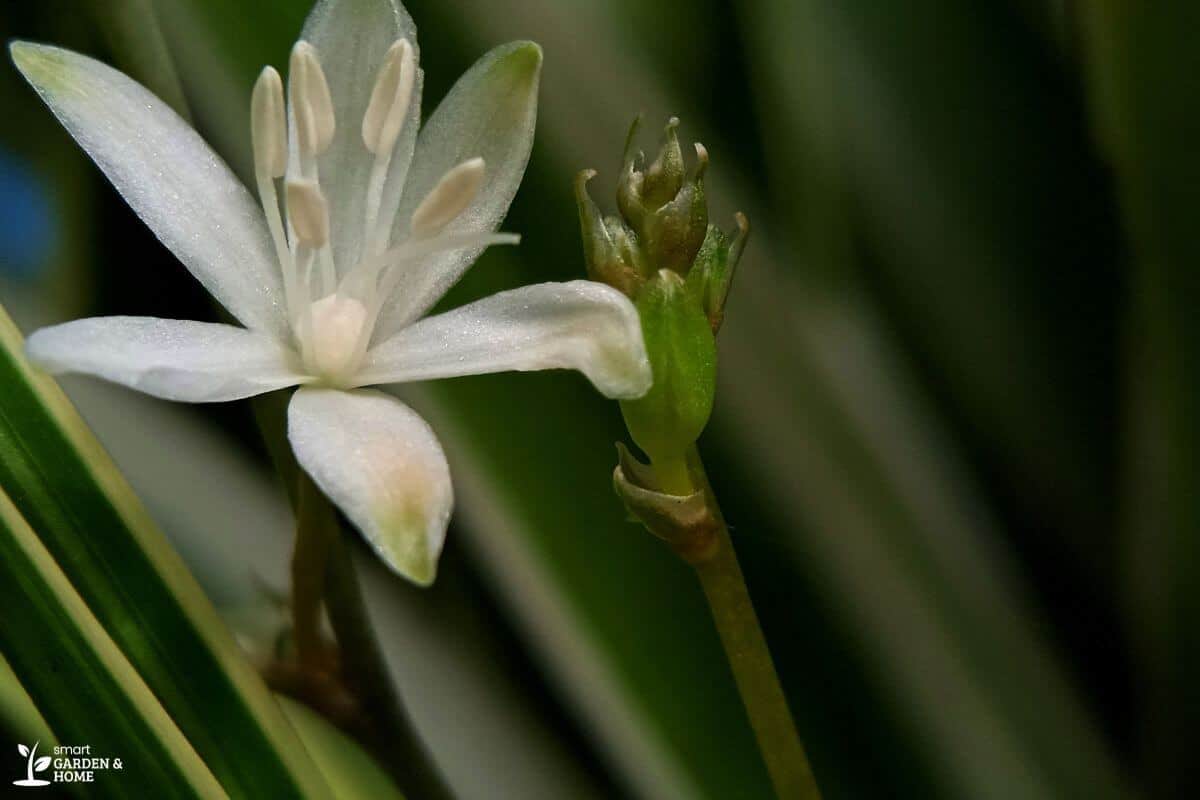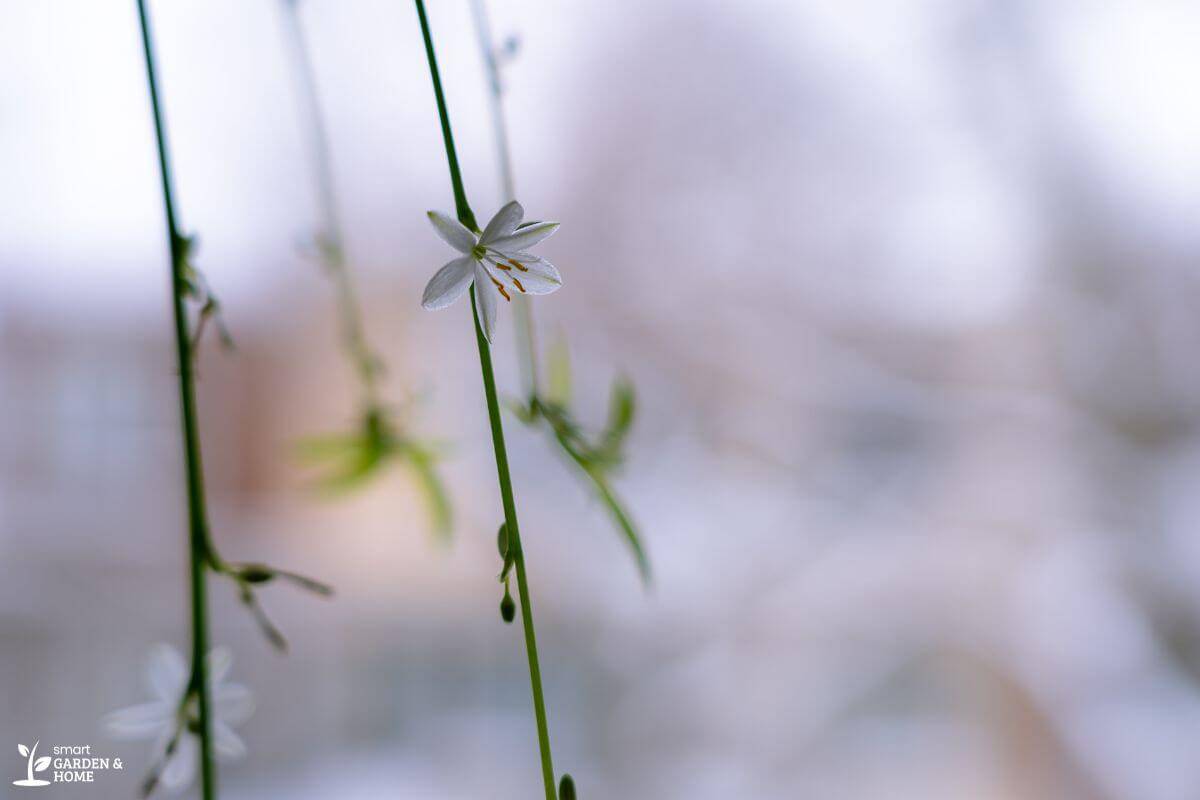A spider plant is also known as an airplane plant or an air plant. Most people grow them from a mother plant’s babies, but did you know that this potted plant also be successfully grown from seeds?
Mature plants have to be pollinated and seed pods are collected once they are dry. Dry seeds should then be sowed and observed for three and a half weeks until they germinate.
Let the seedlings grow to an ideal size before you transplant them to fill your house with new and amazing plants!
- Related Article: Best Way to Care for a Spider Plant
If you want to get a detailed guide on how to collect and grow these indoor plants from seeds, then don’t stop scrolling for detailed spider plant care.
How to Collect Spider Plant Seeds

1. Pollinate Your Spider Plant
In order to produce flowers and then seeds, the mother plant needs to be pollinated first.
If the mother plant is outdoors, insects may take care of it. Otherwise, you should do it yourself by using tweezers to break off the stamen rich with pollen and rub it on the stigma, the sticky center part.
You can do the same by brushing a cotton swab on the flowers.
After a while, the flowers will wither and drop. Green seed pods will start to develop in their place.
2. Wait for the Seed Pods to Dry
At first, spider plant seed pods are green and juicy but you must wait until a month to get it to be fully grown.
Our aim is to harvest the seed pods only when they are mature and that is when they have changed colors from green to brown and appear to be completely dry.
3. Collect the Seeds
Once mature, the seed pods should split open by themselves. Some people like to leave them on the plant until they do, but you risk losing some of the seeds this way. You can harvest them and place them in a paper bag until they open, or break them apart yourself and extract the black seeds.
The seed pod is made out of three segments and each of them has one seed inside. They are very easy seeds to harvest as they’re dry and quite big.
How to Grow Spider Plants From Seeds

1. Sow the Seeds
Use a shallow container and rich potting mix. Spider plants are hardy plants, so they can grow in most soil mixes but while they are in their developing stage, the soil should be very rich in nutrients.
Evenly space the seeds and cover them with about half an inch of soil. Do not plant more than one seed per square foot. Place the seeds near a sunny window.
2. Water
Water well using a spray bottle.
3. Cover With Plastic
You can use any piece of transparent plastic, such as a plastic bag or wrap. This will allow indirect sunlight to penetrate and will ensure that the soil won’t dry out too quickly. It is important to avoid direct sunlight.
4. Provide the Right Conditions
Keep your container at 70° Fahrenheit and place it under bright grow lights. This is especially important after germination.
5. Wait
It can take two weeks or over 30 days for spider plant seeds to germinate.
Be patient and don’t lose hope, just keep watering regularly and keep the soil moist.
6. Feed Your Airplane Plant Seedlings
It’s a good practice to use a houseplant fertilizer about once a month. Make sure you dilute it to at least one-fourth of the recommended strength.
After they start to germinate, this excellent plant will be growing quite quickly.
7. Transplant
Once your spider plants have grown multiple real leaves, they are ready to be repotted. Handle them with care as a spider plant baby can be very delicate. Move each one to a single indoor plant pot, or more than one in a larger container.
Spider Plant Seed Tips

Avoid harvesting seedpods that are still green. Be patient and wait until they’re dry before collecting them, as the seeds won’t otherwise be mature.
It’s best to use spider plant seeds straight away as they don’t store very well.
However, if you happen to collect them during winter, you may keep them in a ziplock bag and label them properly with the date of collection and plant name so you can plant them during spring.
When watering seedlings, use a spray bottle to avoid disturbing the soil and the seeds inside it.
Don’t worry if your baby spider plant leaves aren’t variegated like the mother plant. When propagated using a spider plant baby, new plants will look exactly like the original ones.
When grown from seeds, on the other hand, you will have spider plants with solid green leaves to add some variety to your collection.
When you transplant a spider plant baby, make sure to use well-draining soil to save the spider plant root ball from rotting.
Final Thoughts on Collecting and Growing Spider Plant Seeds
Growing a spider plant can be done by harvesting spider plant pups from the entire plant and placing them in a cup of water or moist soil to grow roots but that is not the only way to do it.
You can also grow a potted spider plant from seed. This will give you a new variety of plainly colored leaves that you can add to your garden to switch up the vibe.
Spider plants are preferred by many because they can be easily grown and requires little to no care. Be patient with the germination process thought and give it adequate sunlight.
Carefully move spider plant seedlings into individual pots when they have multiple real leaves and use well-draining soil to save the plant root from rotting.
Finally, feed this indoor plant a diluted liquid fertilizer in modest amounts during spring for optimal growth.
If this piqued your interest in spider plants, then check out these amazing articles:
- Type of Soil for Spider Plant
- What Kind of Pot Do Spider Plants Like
- Can You Repot Spider Plants
- Do Spider Plants Get Flowers
- Do Spider Plants Need Fertilizer
Sources:

